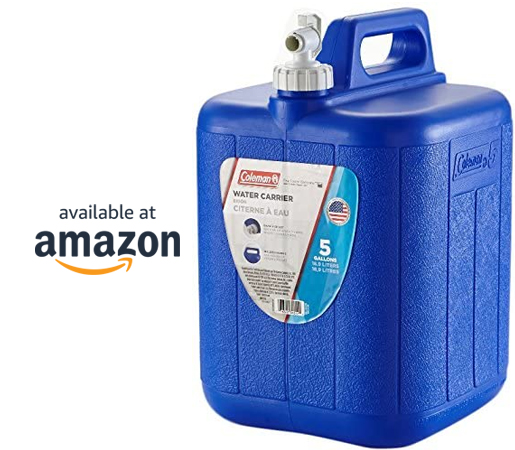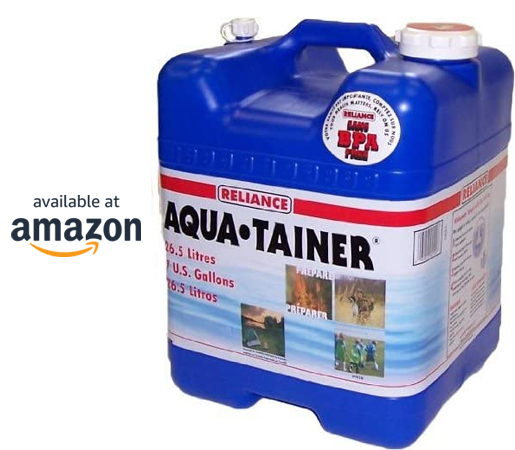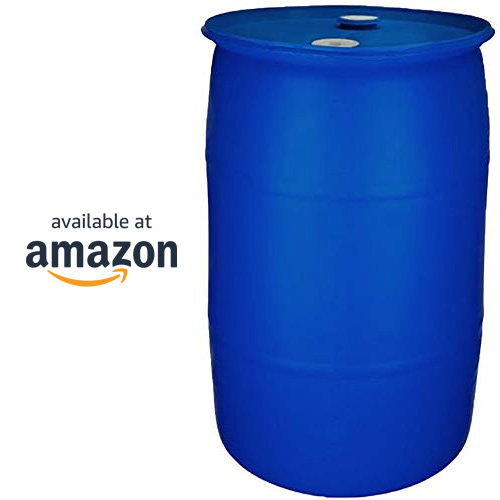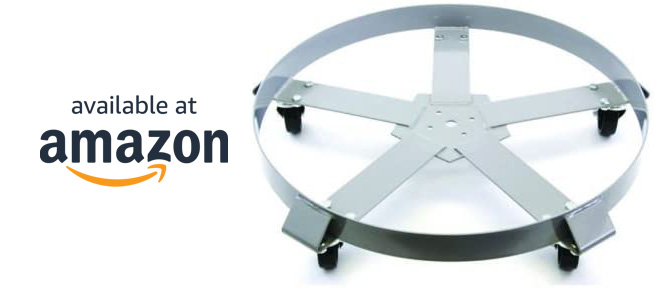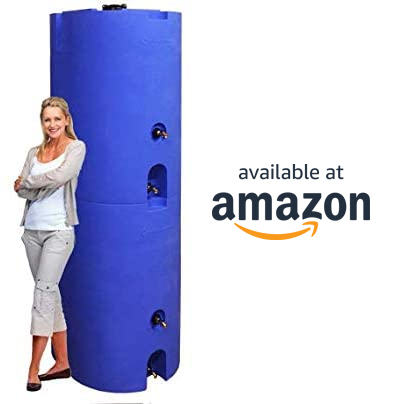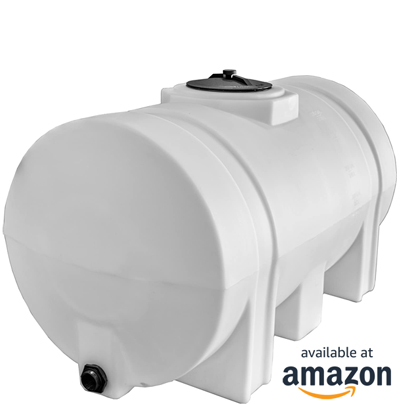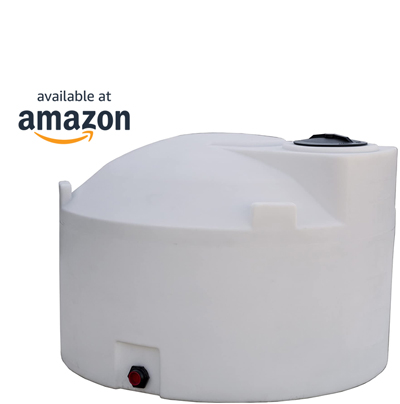Your Water Situation is Worse than You Think
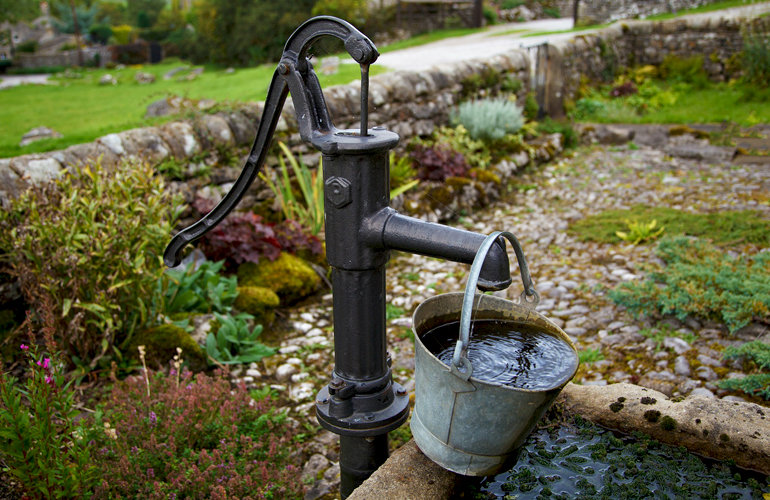
I’ve talked a fair amount about emergency water storage in the past, but I’m going to talk a little more about it now.
Water isn’t exactly one of the exciting aspects prepping. When you plant a garden, you get to literally create food. The subject of home security and defense talks about guns and fun stuff like that. Food preservation and cooking isn’t a white-knuckle thrill ride, but it’s still something you can actively do and participate in.
With water, it’s boring. You’re putting water into containers and then ignoring it. It takes up tons of space, it’s heavy, and it’s not very interesting. But I promise you, you need to be dedicating more of your resources to it.
So what are we really talking about here? If some sort of disaster takes place and your municipal water service is either interrupted or contaminated, where will you get your water for drinking, cooking, and sanitation? You pretty much have three options for water at this point:
- Use water you’ve already stored on-site
- Collect or retrieve water from a remote/external source
- Tap into a natural source of water on your property
Accessing Natural Water Supplies on Your Property
Let’s break these down a bit. I’ll start with tapping into a natural water source on your property. This pretty much means digging a well to access ground water, or utilizing a natural spring, creek, river, pond, etc.
Unless you live in the city or suburbs, you probably already have well water at your home. As long as you have a means to pump the water out of the ground if municipal electric services go down, you are golden. It can’t be overstated how much of an advantage you have if your home is already using ground water from an onsite well. All you really need to do to prepare is make sure your well is in good shape, and come up with a means of pumping water without municipally-provided electricity.
If SHTF tomorrow, I seriously doubt you are going to have the resources to dig a new well on your property. The excavating equipment, the pipes, the pump, and all the other materials you will need will almost certainly not be on-hand, and where are you going to get them? Not to mention the labor and expertise needed to properly dig a well and install a pump. And if you’re located in a city, you are bound to have big problems if you start digging a well. Who knows what pipes, wires, or other utilities you may dig into. Another significant concern would be the attention you would draw. SHTF or not, you are sure to experience neighbors and/or authorities having a major problem with you digging a water well in your back yard.
If you live on a property that has its own natural body of water, you are also at a major advantage. You will need to take more considerations for retrieving and filtering that water, but the fact of the matter is that you have immediate access to tons and tons of fresh water. That is something most Americans will not be able to say if the tap water stops running.
If you intend to use water from a stagnant pond or lake, filtration is an absolute must. I would recommend filtering water from a creek or river as well, but it’s an absolute must if you are collecting stagnant water from any source.
Collecting Water from a Remote Source
Rivers, Lakes, Ponds, Etc.
What I’m talking about here is basically going to a natural body of water and taking what you need. This could be dipping a bucket into a creek, using a pump to fill up a water truck, or simply drinking straight from a lake with a LifeStraw or Sawyer Water Filter. Most people do not have a natural body of water on or near their property, but probably know of one somewhere in their general area. The further away the water source, the worse off you’ll be, because water is very heavy and anybody who’s had to carry a couple 5 gallon buckets full for any amount of distance can attest to how unenjoyable that chore is.
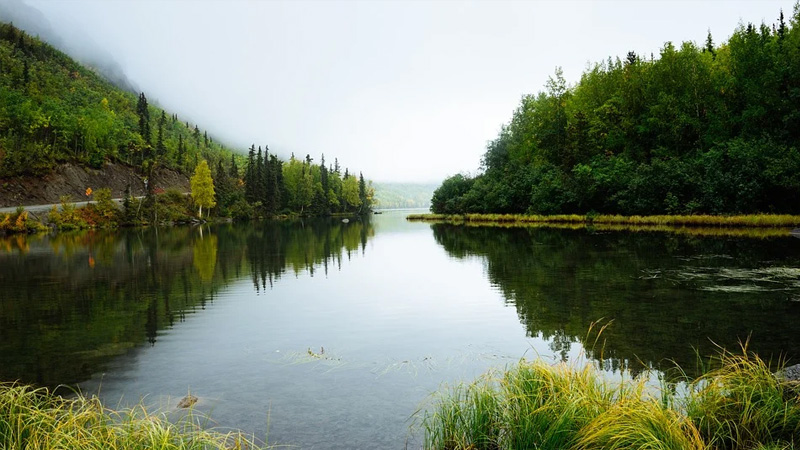
If your only option for water is traveling to a lake or river, then that’s what you’ll have to do. You can’t go without water, so you’ll have no choice. This seems more of a desperate choice though, as having to walk miles every day to get a couple jugs of water means that your prepping has probably failed somewhere leading up to this point.
Collecting Rainwater
I would also include collecting rainwater in this category. While it doesn’t involve leaving your property to retrieve water, it’s still gathering from an outside source. If you live somewhere that gets rain, you should be set up to collect some rainwater. You can use a simple gutter adapter that reroutes a downspout to a rain barrel. Your roof is a very large surface that is exposed to a great amount of rain, and it all ends up in your gutters. Tap into that free water.
If you are able, attach a rain barrel to every downspout on your home. If you’re not able to do this, make sure to empty the rain barrel(s) you do have into another container frequently, to make sure that your barrel can continue collecting as much rain as possible. There are many rain barrel products available, including models that look decorative or otherwise fit nicely in your landscaping without looking like a huge eyesore (if this is something you are concerned with).
Storing Water On-Site
This brings us to what I think is the most common method that preppers in the United States plan to rely on. I’m talking about collecting or acquiring water and storing it in any sort of container in your home or on your property. Jugs, bottles, buckets, barrels, cisterns, or water towers.
I’m very pleased to know so many people who have taken an interest in their own preparedness and self-preservation. But one thing that is disturbingly common among so many of them is that they are grossly underestimating, and therefor grossly under-preparing for, their water needs. I can’t count how many people I’ve heard say something like, “Oh yea, I’m all set on water. I’ve got 20 flats of water bottles in the basement.” Well, that adds up to what? If there’s 24 bottles per case, and about 16 fluid ounces per bottle, that works out to be about 60 gallons.
Understanding Your Current Water Usage
An old rule of thumb says that a single person needs an absolute minimum of 1 gallon of water per day. That is supposed to include water for drinking, cooking, and cleaning. I don’t know about you, but I would be hard-pressed to use only 1 gallon of water in an entire day. If it was a matter of pure survival and nothing else, I could make it work. But I don’t only prep to stay technically alive. I prep to live well despite what problems may come my way.
Just think about how much water you use during a single shower. If you stay in the shower for about 10 minutes, that’s 20-30 gallons of water. How about a pot of coffee? That’s at least a quarter of a gallon right there. How about washing dishes? Flushing the toilet? Washing your hands?
According to the United States Geological Survey, every American uses an average of 80-100 gallons per day for indoor home uses alone!
I think it’s really difficult to fully appreciate the quantity of water you use on a regular basis until you see it all gathered up in one place, such as in containers in your home. Water is heavy and takes up a lot of space. You may feel like you’ve accumulated some massive amount of water, as you step back and behold the huge collection of bottles or jugs you’ve amassed. But when you realize that all of it only amounts to less than 1 day of your average water usage, I think you will be shocked. You’ll be shocked because you will have that handy visual aid of how much water you actually use (on average) every single day of your life, and you’ll be shocked by how little water this giant collection in your basement realistically amounts to.
You’ll be in for a very rude awakening if you think you will instantly and immediately drop that usage down to a mere 1 gallon per day when the time comes.
A Multi-Faceted Approach
Any sufficient prepping measures involve redundancies, contingencies, and multi-faceted solutions. Ideally, you would engage in multiple methods for water collection and storage.
- Having water stored
- Having the means to store more water
- Collecting rainwater
- Filtering water from ponds, lakes, creeks, etc.
- Ability to access groundwater via a well
Not everybody will be able to engage in all of these. If you live in the desert, you don’t have many options for collecting lake water. If you live in a city, you don’t have many options for accessing ground water via a well. For some people, the only real option will be to collect and store as much water as possible before the times comes when you need it.
If you live in a very small place such as an apartment, you will have great difficulty storing an adequate supply of water. The best you can reasonably do do is try and fit 5 or 7-gallon jugs into closets, under beds, or wherever else you have some spare space.
But for anyone with ample space, you are in a position to take more substantial measures to ensure your water supply.
Types of Water Containers
There are lots of different types, styles, and sizes of water containers. Whichever type you decide to use, be sure that you are using actual water storage containers. Don’t just buy tons of bottled water from the store, or those flimsy 1-gallon jugs. These containers are not built for long-term storage. They are easily punctured, and the plastic degrades over time. Some are concerned with chemicals leaching into their water over time from these containers, but I’m more concerned with these containers leaking as the material degrades.
Portable Jugs
What you should be using is some type of BPA-free, food-grade water storage container. They are reusable and last practically forever. You’ve all probably seen the big blue jugs, sold by Coleman and similar companies, that are popular for camping and such. These are fantastic containers to have on hand. They’re durable, they can be easily carried and moved around, and they’re actually designed to store water. I would, however, recommend against using these as your only means of water containment if you can avoid it.
The models I’ve seen usually hold 5 or 7 gallons, which makes them small enough to carry around. But if you aim to store hundreds or thousands of gallons of water, you will simply need too many of these jugs. To keep 500 gallons of water, for example, you would need 100 five-gallon jugs. Imagine for a moment what that would look like in your home. Also, these containers can cost $20-$30 each. 500 gallons of water would cost you as much as $3,000 just for the containers!
I will mention that it’s still great to have a couple of these jugs on hand. When you need to move water from a larger container into the kitchen or bathroom or wherever, these jugs are incredibly handy.
55-Gallon Barrels
Another very popular option is 55 gallon water barrels. I am personally a big fan and proponent of this option. You can store a lot of water in a single container. One 55-gallon water drum costs between $60-$120 on average. To store 500 gallons you would need about 9 barrels. That’s only $500-$1,000 for containers.
If you choose this option for water storage, I highly recommend purchasing a wheeled base for each barrel. These are heavy-duty casters that the barrel sits upon, thereby allowing it to be rolled around as needed. You would find it quite impossible to move 55 gallons around your barn or basement without these casters, as a full barrel of water weighs almost 500 pounds. Even with the additional price of the casters, this option still adds up to be far cheaper than all of those smaller containers.
For more in-depth information, see this article about about storing water in 55-gallon water barrels.
Cisterns, Reservoirs, and Tanks
There are also much larger, stationary containers available for water storage. You can get them in various configurations and of many different sizes. These include large, vertical tanks that can be set up inside your house, as well as massive tanks that can be buried underground. Regarding cost, price per gallon of storage will generally be lower the larger the container is. Here are some examples of great options to store a large quantity of water for under $1,000.
In conclusion, you almost certainly do not have enough water. Unless you have a natural source of water on your property, you likely need to store more than you have currently. We take water for granted, because basically none of us have ever lived in a time or place without an unlimited supply of clean water literally shooting out of our walls! But if that water ever stops flowing or becomes contaminated, you will immediately begin to suffer without a substantial alternative supply. Don’t underestimate just how bad life will get without lots of clean water, and don’t underestimate just how much of that clean water you are accustomed to using.

